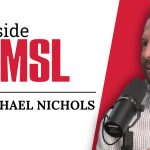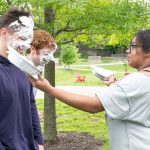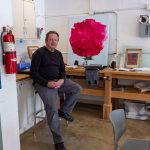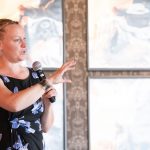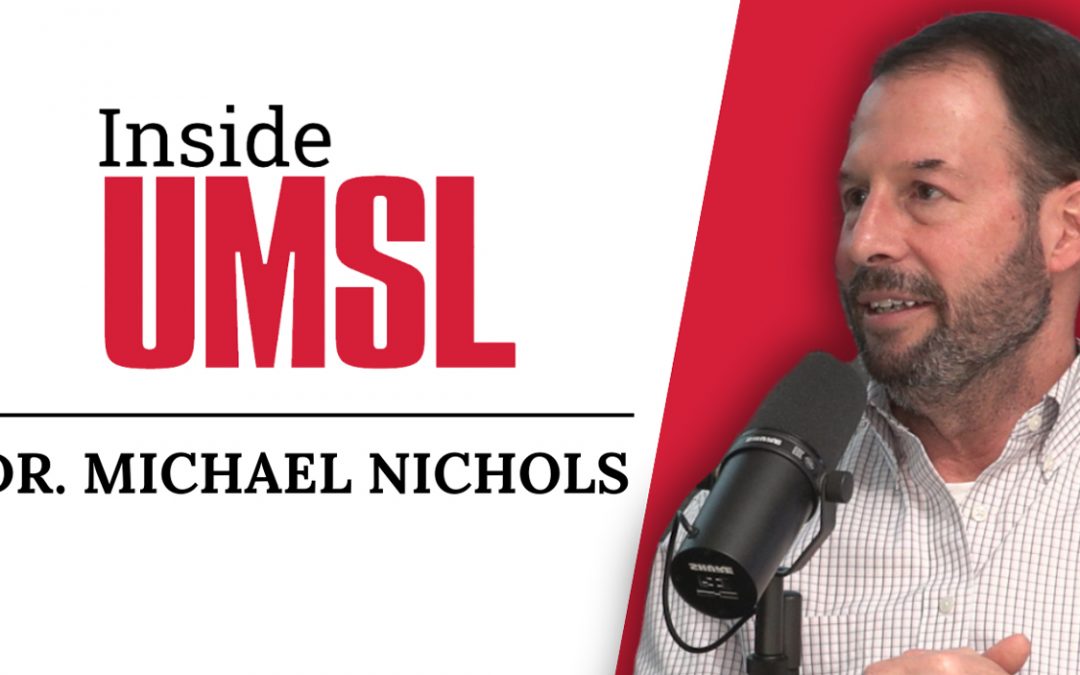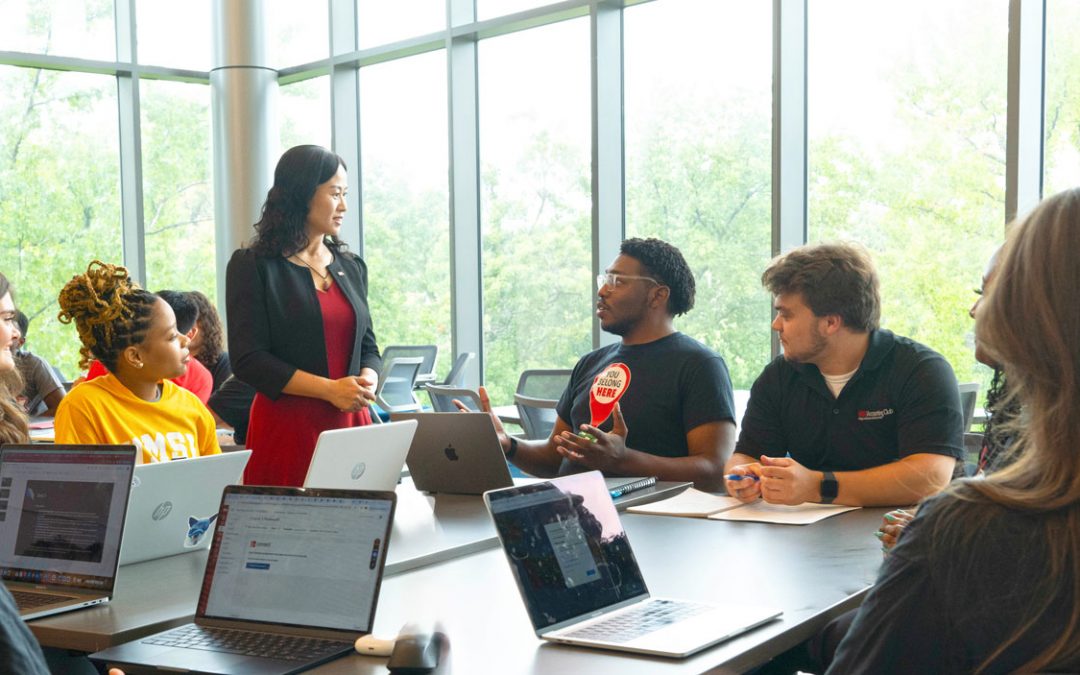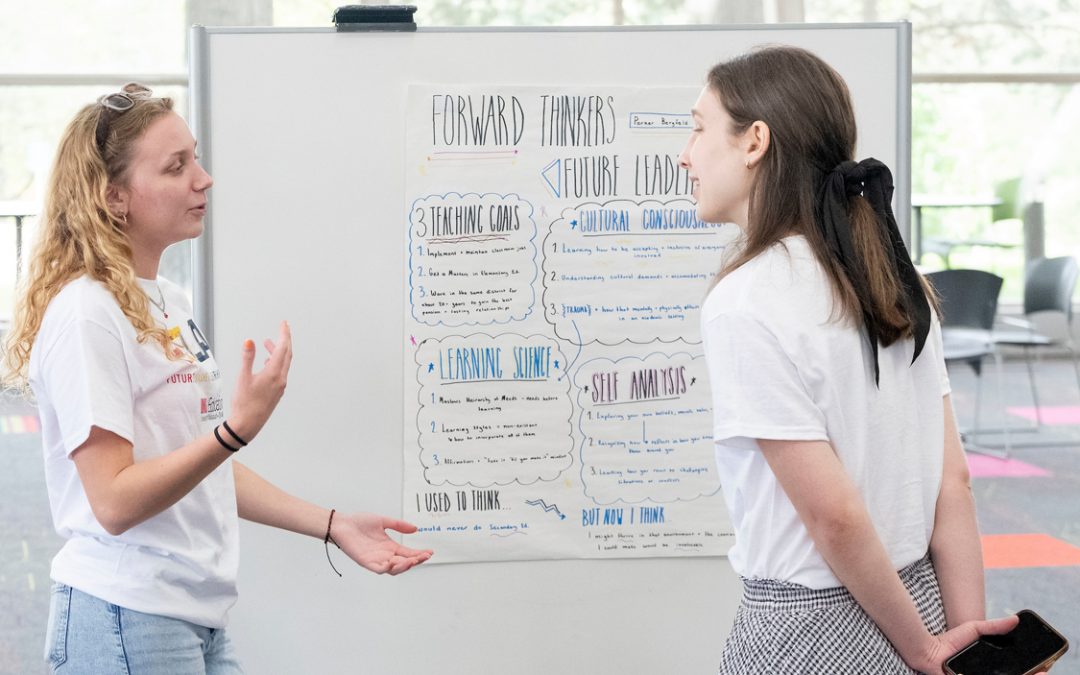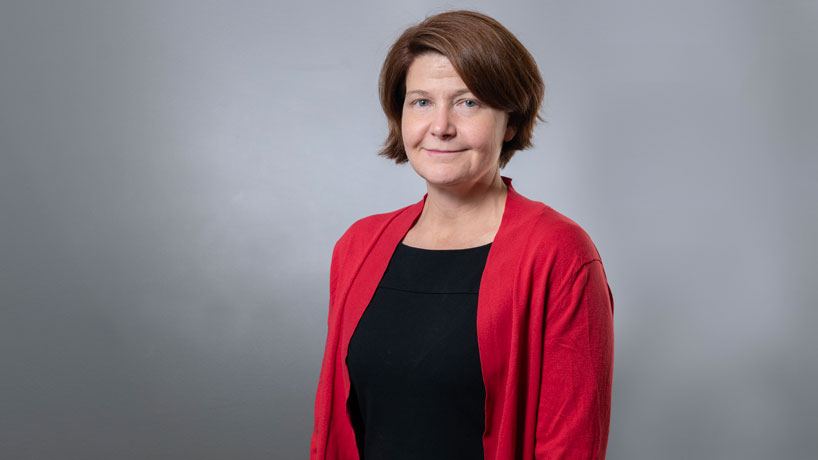
Lee Slocum, a professor of criminology and criminal justice, is the lead author on a new report detailing what drives people’s feelings of community safety. The research underlying the report was done with the support of a grant from the John D. and Catherine T. MacArthur Foundation. (Photo by Derik Holtmann)
New research by investigators at the University of Missouri–St. Louis sheds light on what it means for people to feel safe – and unsafe – in their communities.
The 2023 Redefining Community Safety Report, released on Tuesday, highlights how people’s feelings are based on their personal safety and security, their perceptions of their community as thriving and socially connected, the fairness and effectiveness of systems they see for preventing and addressing harm in institutions such as the police and courts, and the responsiveness of public safety agencies.
But attitudes about safety are also shaped by factors outside traditional measures of crime, including housing-related issues, visible drug use in a community, people’s distrust of police, prevalence of gun violence, people’s sense of belonging and freedom from fear of victimization.
Professor Lee Slocum from UMSL’s Department of Criminology and Criminal Justice led the team of researchers, including Kiley Bednar, co-director of the Community Innovation and Action Center; Associate Professor Adriano Udani, the director of the Public Policy Administration Program; former faculty member Beth Huebner, now a professor at Arizona State University; and Claire Greene, an UMSL PhD graduate now serving as a visiting assistant professor at Webster University.
They partnered with local officials in St. Louis County as well as Mecklenburg County, North Carolina, and Missoula County, Montana, and conducted surveys, interviews and focus groups with community members.
The work was supported by the John D. and Catherine T. MacArthur Foundation through a grant managed by the CUNY Institute for State & Local Governance through the Safety and Justice Challenge Research Consortium.
“The research clearly shows that community safety goes far beyond crime rates,” said Jennifer Ferone, CUNY ISLG’s deputy research director and director of the SJC Research Consortium, in a news release. “To make people feel safer where they live, justice system stakeholders must take a far more holistic approach and listen to community needs, from creating thriving public spaces to increasing access to mental health services. When we center people who are most impacted by crime and the criminal legal system in the conversation around public safety, we can create safer communities for all. This important knowledge development is the type of work that the Consortium was designed to support: meaningful, data-backed reforms that make communities both safer and more equitable.”
The researchers designed the surveys to capture a wide swath of community voices. They were then able to dig deeper into people’s feelings through interviews and focus groups, which provided more nuanced views of the criminal justice system. They made a special effort to include the voices of people who are often omitted in investigations of this type, such as unhoused individuals, people who have been involved in the criminal justice system, and those who have experienced violence.
“One of the major findings to emerge from the research is that people with varying life experiences think about safety differently, suggesting that community safety efforts need to take into account the views and priorities of local residents,” Slocum said in a news release. “In addition, people viewed safety as a collective responsibility and not the sole responsibility of law enforcement or people living in high-crime communities. Redefining public safety as community safety emphasizes that everyone has a role to play in keeping communities safe.”
Participants in Missoula County expressed safety concerns about housing and the visibility of the unhoused population. In Mecklenburg and St. Louis Counties, respondents referenced gun violence and issues related to the police as major safety concerns in their communities.
The researchers also did a media analysis to learn how media in the three counties reported on crime and the criminal justice system.
Researchers, working with criminal justice experts, offered some recommendations for how local communities can reimagine what safety looks like. They include:
- Making information on community safety readily available, in a dashboard or website, so that it can be used by a variety of stakeholders.
- Using more precise language, so that conversations are framed around “community safety” instead of “public safety” so that people might think more broadly about what safety looks like and how to achieve it.
- Educating people on a vision of safety that moves beyond a focus on crime statistics.
- Identifying local priorities and structuring future action steps using the Community Safety Concept Map that was generated from this research. The map was designed to be a dynamic tool to promote discussions about safety from a more holistic perspective.
Media Coverage
KMOX
St. Louis Public Radio


